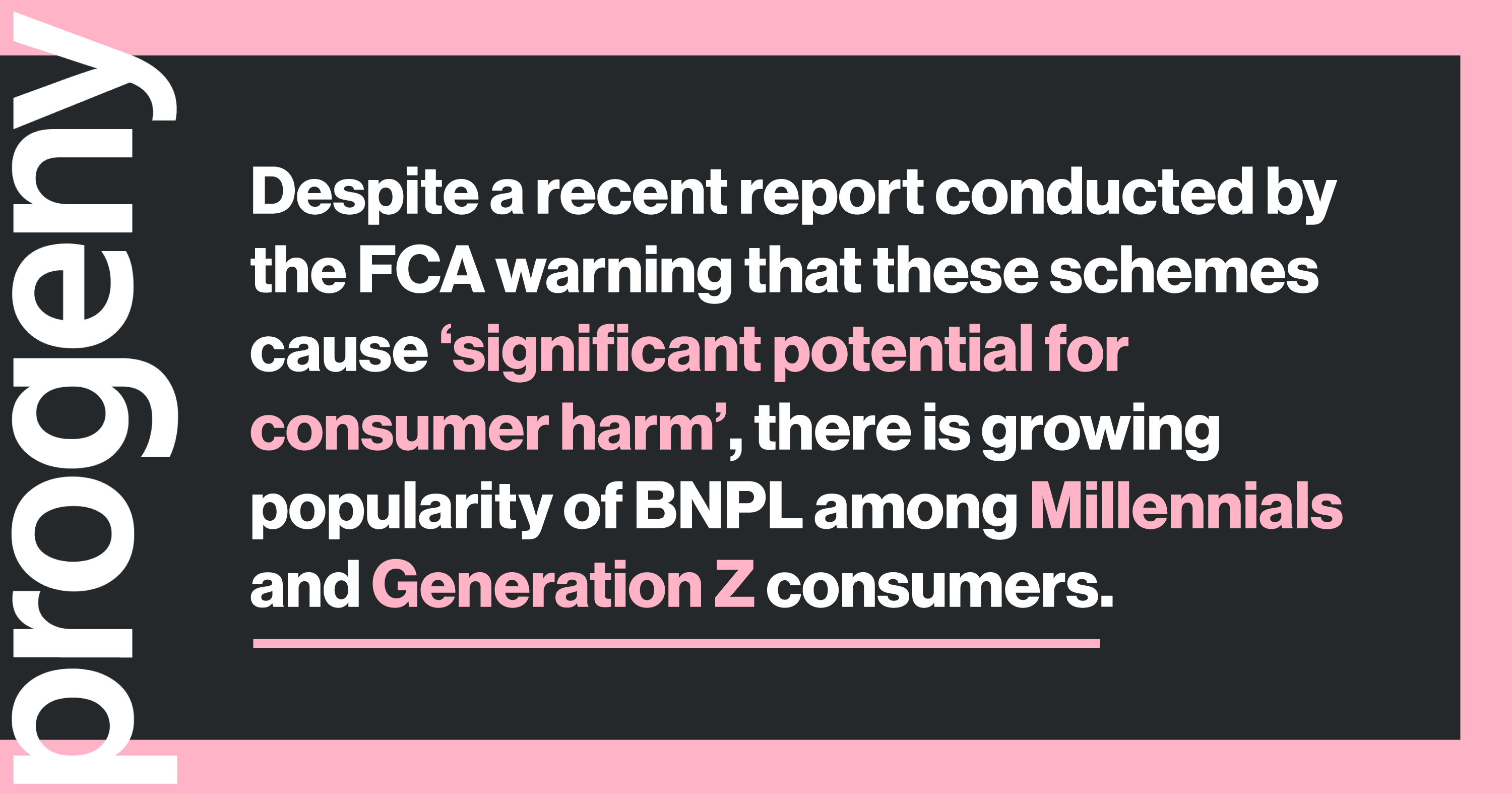Buy Now Pay Later (BNPL) schemes are increasingly popular payment options for online retail purchases, giving consumers the opportunity to buy products and pay for them at a future date. Whilst these companies often advertise interest-free rates, failed or late repayments can lead to Buy Now Pay Later debt from fee charges and, in turn, damaged credit scores. The popularity of these schemes is growing – and has done particularly since the beginning of the pandemic.
In many instances, BNPL companies like Klarna, Clearpay and Laybuy are being offered as standard methods of payment for hundreds of popular online retailers such as ASOS, Wayfair and Marks & Spencer, allowing customers to stagger their payments for products with no interest or fees, unless they fail to pay back on time. The revenue from these late fees can make up a significant portion of the firms’ overall revenue – Klarna is now valued at £33bn.
Despite a recent report conducted by the FCA warning that these schemes cause ‘significant potential for consumer harm’, there is growing popularity of BNPL among Millennials and Generation Z consumers. The proliferation of these schemes with their ease of deferring payments for small purchases could result in personal debt problems for this generation.
Misleading marketing
Many of the popular Buy Now Pay Later companies are marketing to the younger generation of shoppers, and especially young women. Imagery of carefree people wearing the latest fashions can be seen on their websites. Candy pink brand colours and meme style social advertising are all designed to lure customers in without addressing the implications of financial debt. Even when explaining the ins and outs of these payment plans, companies adopt reassuring, colloquial language claiming ‘we’ve got your back’ (Clearpay, 2021) if you miss a payment – despite collecting up to 25% extra in small print fees.
The marketing strategy behind these schemes often taps into the ‘treat yourself’ wellness-co-option model of consumerism, claiming that Buy Now Pay Later is the ‘shopping experience you deserve’ (Klarna, 2021). The language in these marketing campaigns often encourages people to spend money at a time when they may not have it just to satisfy the instant gratification of online shopping, without considering the financial implications down the line. In fact, in 2020, Klarna ran a series of Instagram adverts that were banned by the Advertising Standards Authority for being ‘irresponsible for encouraging the use of Klarna’s deferred payment service to help people lift their low mood during the Covid-19 lockdown.
Debt at the touch of a button
Another potential danger of Buy Now Pay Later schemes is the ease of use at online checkouts. Consumers can sign up to these schemes at checkout without entering their card details, removing that additional layer of thinking time before getting into debt at the touch of a button. In some cases, websites even have Buy Now Pay Later schemes set as the default payment method, also making accidental subscriptions a real possibility.
In the FCA report, concerns were raised about how easy it has become for consumers to buy more than they can afford and build up large debts. They note that ‘while the average amount borrowed per transaction is between £65 and £75, consumers can still have multiple outstanding transactions across different providers, and so there is a risk that the overall amount owed can be much greater. BNPL providers are looking to widen their scope from predominantly fashion and accessories, and are starting to partner with higher value retailers […] This could increase average transaction values and therefore outstanding balances.’

Buy Now Pay Later debt – case study
J, age 37, shared her story on how she was caught out by Buy Now Pay Later debt.
“Back in lockdown, ASOS extended its return window. I placed a pretty large order (about £150) and used Klarna. I’ve got next day delivery with ASOS so it’s so easy to press a few buttons, my clothes arrive on the doorstep the next morning and I haven’t had to worry about how much I’ve spent!
“I sat on my clothes for a while, then sent them back thinking I had ages to do it. Turns out ASOS had reduced their returns window back to 28 days without me realising and so I missed the refund period. ASOS gave me a credit note, but Klarna still showed that I owed them £150. Because ASOS hadn’t refunded actual money, I was stuck with a £150 credit note from ASOS and a bill for £150 with Klarna, that I couldn’t afford to pay. They weren’t flexible in letting me split the repayments. They let me pause it for a couple of weeks, but ultimately, I had to stump up £150 in one go to pay this “debt” off.
“My current balance stands at around £140, which I’ll have to find next month to pay it off. But it’s just way too easy to buy things you don’t need, on a whim, because you don’t have to put in ANY details. At least with a credit card, even if it’s stored on the website, you’ll still need to put your CVV number into the order page. At least that’s one more step you’ve got to think whether you actually need what you’re buying.
“My amounts that I owe are relatively small, and I can manage them if I’m sensible. But I can see how easy it is to get into crazy amounts of debt, really quickly, and I’m not sure how sympathetic they will be as a company to helping you if it becomes unmanageable. And that’s where they need to be responsible.”
Debt spiral
BNPL schemes defer payment obligation to a future date, potentially with the option of splitting the payment into segments. However, it is easily possible that when the time comes to make their payment, consumers find there have been other demands on their money. This is where the danger of a Buy Now Pay Later debt spiral increases: taking out more expensive, interest-paying debt (for example, credit cards or payday loans) to repay existing debt, therefore exacerbating the issue.
The concerning thing and the key issue to be aware of about BNPL is its seeming innocence. By its very nature it is targeting the financially vulnerable, those who can’t afford what they want immediately but still seek the means of acquiring it. Millennials and Generation Z are already facing well-documented financial challenges as a result of structural socio-economic issues, so anything that threatens to add to their financial problems like Buy Now Pay Later debt – particularly while appearing so attractive – should be viewed with caution.
If you have issues with debt, please contact Citizens Advice for help and support. To speak to one of our financial advisers, contact us today.






